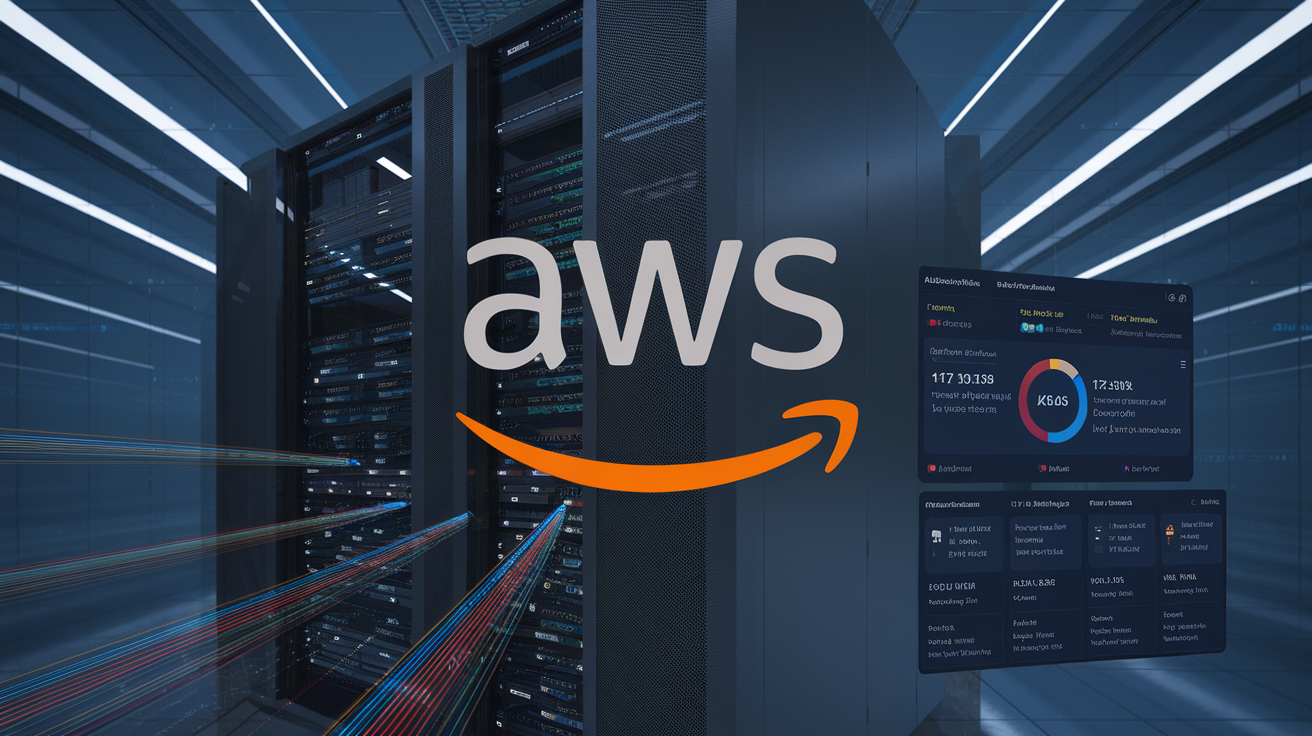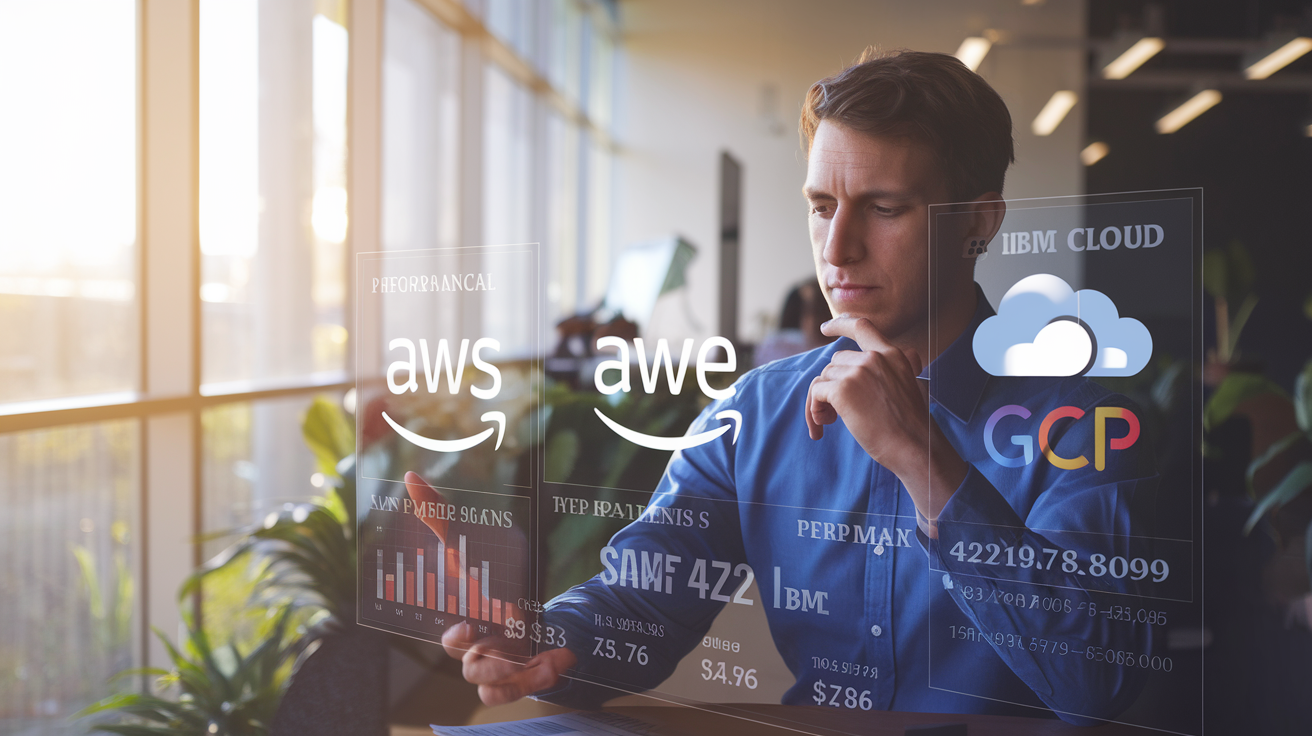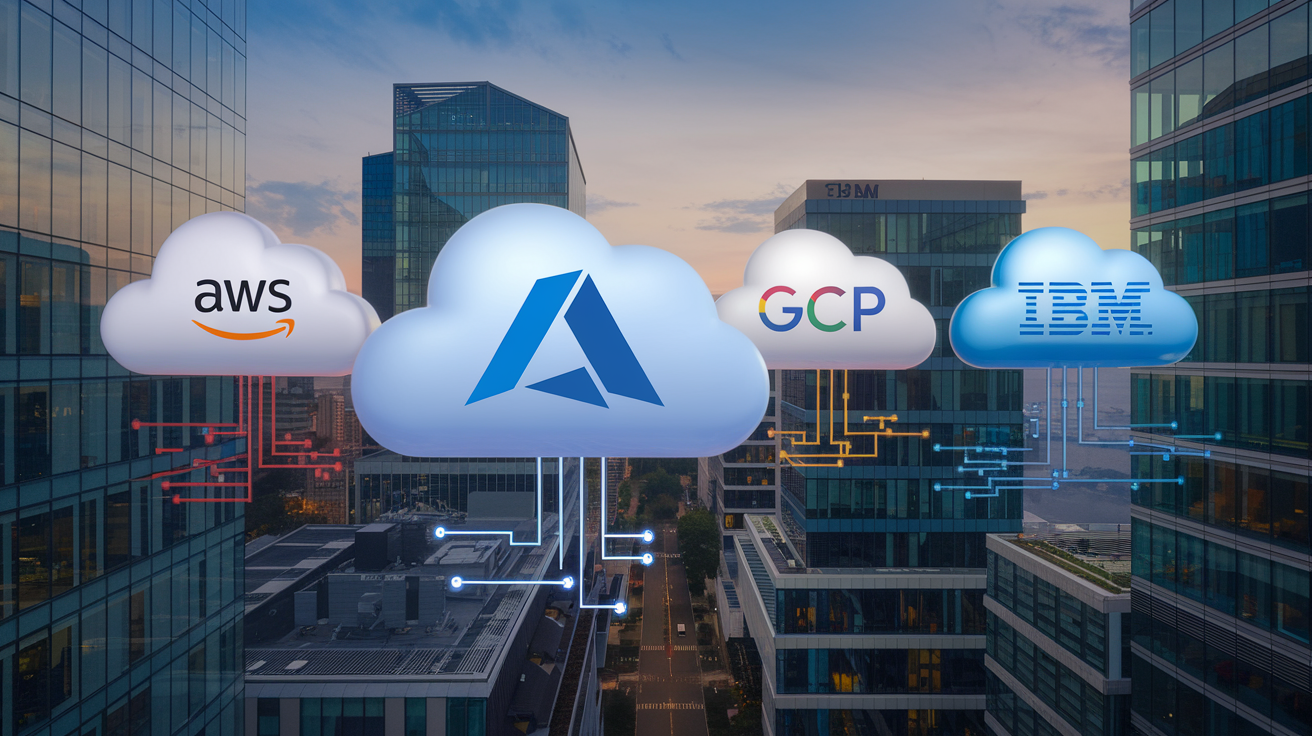You’ve spent hours trying to understand the “cloud” and now you’re drowning in acronyms, jargon, and sales pitches. I get it—I’ve been there too.
Let me guess: you just want someone to explain the differences between AWS, Azure, GCP, and IBM cloud services without treating you like you have a computer science degree.
That’s exactly what you’ll get here—a no-nonsense breakdown that actually makes sense.
Understanding the Big 4 cloud providers isn’t rocket science, but most explanations make it feel that way. I’ve stripped away the tech-speak to give you the real deal on what each platform offers, who they’re best for, and how much they’ll set you back.
But here’s what might surprise you about these tech giants and their cloud empires…
Cloud Computing Fundamentals: What You Need to Know

Why Cloud Services Are Revolutionizing Business Operations
Cloud services have turned business operations upside down, and honestly, it’s about time. Gone are the days of massive upfront IT investments and rigid infrastructure. Companies now scale resources instantly, paying only for what they use. This flexibility lets startups compete with giants and established businesses pivot faster than ever before.
Infrastructure as a Service (IaaS) Explained
IaaS strips computing down to its basics. Think of it as renting the digital equivalent of an empty apartment – you get the space (servers, storage, networks) without having to build or maintain the building. AWS EC2, Azure Virtual Machines, and Google Compute Engine are prime examples where you control the software while your provider handles the physical headaches.
Platform as a Service (PaaS): Building Without Hardware Headaches
PaaS is like moving into a furnished apartment with utilities included. Developers get pre-configured platforms with built-in tools, databases, and development frameworks. Just bring your code and start building. No need to worry about operating systems, server maintenance, or capacity planning – your cloud provider has you covered.
Software as a Service (SaaS): Ready-to-Use Applications
SaaS delivers fully-functional applications straight to your browser. No installation. No updates. No maintenance. Just log in and get to work. From Microsoft 365 to Salesforce, these cloud-based solutions eliminate IT burden completely. Your team focuses on using the tools while providers ensure everything runs smoothly behind the scenes.
Amazon Web Services (AWS): The Market Leader Demystified

Amazon Web Services (AWS): The Market Leader Demystified
A. Key AWS Services That Drive Business Value
AWS dominates the cloud landscape with good reason. Their service portfolio is mind-boggling—over 200 fully-featured services spanning compute, storage, databases, analytics, networking, and more. The real magic? How these building blocks combine to solve actual business problems. S3 for limitless storage, EC2 for flexible computing power, and Lambda for serverless innovation are just the beginning.
B. AWS Pricing Model: Getting the Most Bang for Your Buck
AWS pricing can feel like navigating a maze if you’re new to cloud economics. They operate on a pay-as-you-go model, meaning you only pay for what you use—no upfront costs or termination fees. The real savings come through their discount options: Reserved Instances for predictable workloads (up to 72% off), Spot Instances for flexible jobs (up to 90% off), and Savings Plans for committed usage. The AWS Cost Explorer tool is your best friend here.
C. Industries Thriving with AWS Solutions
Healthcare organizations use AWS to process medical images and run predictive analytics on patient data. Financial services firms leverage it for risk modeling and fraud detection. Media companies stream content to millions. Retail giants personalize shopping experiences. Manufacturing businesses optimize supply chains. The common thread? AWS helps these industries innovate faster, scale effortlessly, and focus on their core business instead of managing servers.
D. AWS Strengths and Limitations: An Honest Assessment
AWS shines with its massive service breadth, global infrastructure (25+ regions), mature tooling, and enterprise-grade security. Their innovation pace is relentless—hundreds of new features yearly. But it’s not all sunshine. The learning curve is steep for newcomers. Cost management requires vigilance (surprise bills happen). Vendor lock-in concerns are real. And their console can feel overwhelming compared to more streamlined competitors like GCP.
E. Getting Started with AWS: Essential First Steps
Start by creating a free tier account—it gives you 12 months to experiment with core services. Set up billing alerts immediately to avoid surprise charges. Begin with the fundamentals: launch an EC2 instance, create an S3 bucket, and explore IAM for security. The AWS Well-Architected Framework should be your guide for best practices. For learning, AWS Skill Builder offers free courses, and their documentation is comprehensive. Remember: start small, then expand as your confidence grows.
Microsoft Azure: Seamless Integration for Modern Businesses

Microsoft Azure: Seamless Integration for Modern Businesses
A. Azure’s Business-Friendly Ecosystem Explained
Azure isn’t just another cloud platform—it’s a complete business toolkit designed with real-world enterprise needs in mind. Microsoft built Azure to play nicely with the tools companies already use daily: Office 365, Teams, and the entire Microsoft stack. This seamless integration creates an ecosystem where your existing workflows don’t get disrupted, they get supercharged.
B. Hybrid Cloud Capabilities That Set Azure Apart
Azure’s hybrid approach is a game-changer for companies not ready to go all-in on cloud. With Azure Stack, you can run Azure services right in your own data center, creating a consistent experience across environments. No other provider matches Azure’s commitment to meeting you where you are—whether that’s on-premises, in the cloud, or somewhere in between.
C. Enterprise Integration: Why Companies Choose Azure
Companies with established Microsoft relationships find Azure to be the natural next step in their digital journey. Active Directory integration alone saves countless IT headaches, allowing seamless identity management across cloud and on-premises resources. For businesses heavily invested in Windows environments, Azure eliminates the friction that comes with platform switching.
D. Azure AI and Machine Learning Tools for Business Advantage
Azure’s AI toolbox isn’t just powerful—it’s practical. From the no-code simplicity of Azure Cognitive Services to the sophisticated capabilities of Azure Machine Learning, Microsoft has democratized AI for businesses of all sizes. Companies leverage these tools to extract insights from customer data, automate repetitive tasks, and create intelligent applications without needing an army of data scientists.
Google Cloud Platform (GCP): Innovation-Focused Solutions
Google Cloud Platform (GCP): Innovation-Focused Solutions
A. GCP’s Data Analytics Powerhouse Capabilities
Google Cloud’s BigQuery steals the show when it comes to data analytics. This serverless data warehouse lets you analyze massive datasets in seconds without managing infrastructure. Companies love how it scales automatically and charges only for what you use. Unlike competitors, BigQuery handles both structured and unstructured data with ease, making it perfect for businesses drowning in information but thirsty for insights.
B. Kubernetes and Container Excellence in GCP
Kubernetes was born at Google, so it’s no surprise GCP offers the most seamless container experience. Google Kubernetes Engine (GKE) takes the complexity out of container orchestration with auto-scaling, auto-healing, and auto-upgrading features that just work. Developers flock to GKE because it strikes that sweet spot between giving you control and handling the tedious stuff you’d rather not deal with.
C. Machine Learning and AI Tools That Outperform Competitors
GCP’s AI tools make machine learning accessible to mere mortals. TensorFlow, AutoML, and the AI Platform let you build and deploy models without a PhD in data science. What really sets Google apart? Their pre-trained APIs. Need image recognition, speech-to-text, or natural language processing? Google’s been perfecting these for years in their own products, and now you get that same tech with just a few lines of code.
D. GCP’s Pricing Advantages for Specific Workloads
GCP often comes in cheaper than AWS and Azure for certain workloads. Their sustained use discounts kick in automatically – use a VM for a month and watch your bill shrink by up to 30%. No upfront commitments required. For data-heavy operations, their network pricing rocks – data transfer between GCP services in the same region costs nothing. Zero. Zilch. That’s a huge win for microservices architectures.
E. When GCP Makes the Most Sense for Your Business
GCP shines brightest for data-centric organizations, startups needing room to grow, and companies building AI/ML solutions. If your team already uses Google Workspace, the integration is seamless. GCP’s global network is lightning fast, making it ideal for content delivery and global applications. Pick GCP when innovation speed matters more than having every possible service variant under the sun.
IBM Cloud: Enterprise-Grade Solutions for Complex Needs
IBM’s Hybrid and Multi-Cloud Approach
IBM Cloud doesn’t force you to choose between public or private cloud. They’re the OGs of hybrid cloud strategy, letting businesses keep sensitive data on-premises while running other workloads in the cloud. This flexibility is why many enterprises with legacy systems stick with IBM—they bridge old and new tech seamlessly.
Industry-Specific Solutions That Deliver Results
IBM isn’t trying to be everything for everyone. They’ve doubled down on industry-specific cloud solutions that solve real problems. Banking, healthcare, manufacturing—IBM’s vertical focus means they build tools tailored to your industry’s regulations and workflows, not generic services you have to customize yourself.
Watson AI Integration Across IBM Cloud Services
Watson isn’t just a Jeopardy champion anymore. IBM has woven its AI capabilities throughout their cloud platform. From conversation services to visual recognition, Watson gives IBM Cloud an edge for companies looking to build intelligence into their applications without AI expertise in-house.
Red Hat OpenShift and IBM’s Container Strategy
After dropping $34 billion to acquire Red Hat, IBM made OpenShift the centerpiece of their container strategy. This Kubernetes platform works across any cloud environment, which means your containerized apps can run anywhere without getting locked into a single vendor’s ecosystem.
Choosing the Right Cloud Provider for Your Specific Needs

Choosing the Right Cloud Provider for Your Specific Needs
A. Decision Framework: Matching Business Requirements to Provider Strengths
Picking a cloud provider isn’t a one-size-fits-all situation. You need to match what your business actually needs with what each provider does best. AWS might rock at scalability, but Azure could be your go-to if you’re already knee-deep in Microsoft products. Start by listing your non-negotiables – whether that’s specific security features, geographic coverage, or specialized services. Then stack those against what each provider offers.
B. Multi-Cloud Strategies: When One Provider Isn’t Enough
Sometimes one cloud just doesn’t cut it. Multi-cloud strategies are gaining traction because they let you cherry-pick the best bits from different providers. Maybe you run your core apps on AWS but use Google’s AI capabilities or Azure’s integration with Office 365. This approach helps you avoid vendor lock-in and creates built-in redundancy. But be warned – it also means juggling multiple platforms, billing systems, and security protocols.
C. Migration Considerations: Moving Your Infrastructure Smoothly
Cloud migration can be a bumpy ride if you don’t plan ahead. Each provider offers different migration tools and paths. AWS has Migration Hub, Azure has Migration Center, and GCP offers Transfer Service. Think about your current setup – is it mostly Windows-based? Already containerized? These factors influence which provider offers the smoothest transition. Don’t forget to consider downtime requirements and whether you need a phased approach.
D. Cost Optimization Across Different Cloud Platforms
Cloud bills can give you sticker shock if you’re not careful. Each provider structures pricing differently:
| Provider | Pricing Model Highlights | Cost Optimization Tools |
|---|---|---|
| AWS | Pay-as-you-go with reserved instances | AWS Cost Explorer, Trusted Advisor |
| Azure | Hybrid use benefits for Windows workloads | Azure Cost Management, Advisor |
| GCP | Sustained use discounts | Cost Management, Recommender |
| IBM | Pay-as-you-go with tailored enterprise pricing | Cloud Analyzer |
Watch out for data transfer costs – they’re often the hidden budget-killers across all platforms.
E. Security and Compliance Capabilities Compared
Security needs vary wildly by industry. Healthcare organizations need HIPAA compliance, while financial services require SOC 2. AWS boasts the most certifications overall, but Azure often edges ahead for government workloads with its FedRAMP offerings. GCP’s security model builds on Google’s infrastructure, while IBM focuses on regulated industries. Don’t just compare feature lists – evaluate how each provider’s security philosophy aligns with your risk tolerance and compliance requirements.

The Big 4 cloud providers—AWS, Azure, GCP, and IBM Cloud—each offer unique strengths and capabilities to meet diverse business needs. AWS leads with its vast service portfolio and mature infrastructure, while Azure excels in Microsoft ecosystem integration. GCP stands out with cutting-edge innovations particularly in AI and data analytics, and IBM Cloud delivers specialized enterprise solutions with robust security features. Understanding these distinctions is crucial as organizations navigate their cloud journey.
Your ideal cloud provider ultimately depends on your specific requirements, existing technology investments, and long-term business goals. Whether you prioritize market dominance, seamless integration, innovative capabilities, or enterprise-grade security, there’s a cloud solution tailored for your needs. Take time to assess your requirements carefully, consider starting with small projects to test compatibility, and remember that many organizations successfully implement multi-cloud strategies to leverage the best of each provider. The cloud journey isn’t about finding the “best” provider—it’s about finding the right fit for your unique business challenges.



















